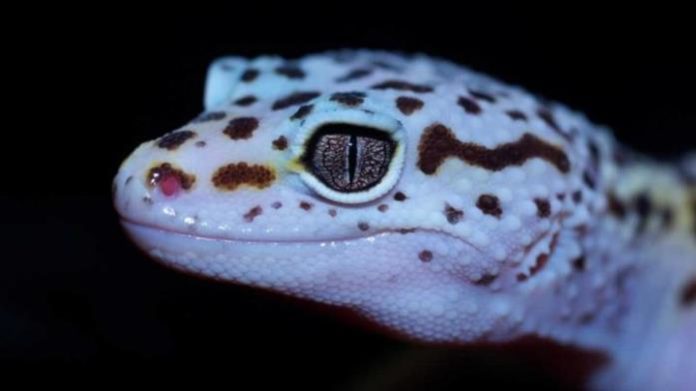In the Vickaryous lab at the University of Guelph, PhD student Emily Gilbert spent her days meticulously studying the cells within a thin layer of tissue lining the centre of the gecko spinal cord. The goal: identifying the source of the gecko’s amazing regenerative powers, which allow it to regrow a severed tail – complete with functioning spinal cord – in just 30 days.
There was good evidence that the gecko’s regenerative capacity stemmed from this cell layer known as the ependyma, but the exact cell type responsible hadn’t yet been pinpointed. Gilbert’s new results, published last week in the Journal of Comparative Neurology, finally identify radial glia as the mystery cell type.
Radial glia are present in the developing spinal cord of most animals, acting as both a source of new neurons and a highway along which they can travel to their final locations. In humans, that’s where their role ends; but in other animals capable of spinal cord regeneration, such as salamanders and zebrafish, a number of radial glia stick around waiting for an injury to wake them up again. Now we know that these sleeper radial glia also exist in geckos, a species more closely related to mammals.
“We’re only beginning to understand how similar or different these cells are to those that exist within the mammalian spinal cord,” explains Gilbert.
Now, as a postdoctoral fellow in the Morshead lab at the University of Toronto, she hopes to add to this knowledge base by studying the ependymal cells of the mouse, which also have some regenerative capacity, though not nearly enough to recover function after spinal cord injury.
One major difference lies in the post-injury environment – in lizards like the gecko, the environment encourages regeneration, while in mammals like mice and humans, regeneration is actively suppressed. Gilbert believes that the lizard model can be incredibly powerful to help understand which environmental factors are necessary to maximize the regenerative response.
“We need more comparative studies where the same experiments are performed across regeneration competent and incompetent species to parse out key similarities and differences,” says Gilbert. “Scientists working in mammals don’t think about lizards – it’s not even on their radar. I think it’s a missing link.”
Gilbert is passionate about increasing collaboration between researchers studying regeneration in different animals. Data is not as powerful when it is studied in isolation – integration of information about the regenerative process in different species could have huge implications for directing future human spinal cord research.
“Lizards the experts when it comes to regeneration and we just have so much to learn from them!”








































